Retrospective on The Incredible Crash Dummies
Pop culture icons have appeared from the strangest of sources, as in the case of the Incredible Crash Dummies. Back in the 1980s, no one would have predicted that children would want to play with a group of crash test dummies. While these dummies had taken on a doll-like humanoid appearance, few people thought of them as toys or cartoon stars before the 1980s. However, all the dominos fell in the right way to create this short-lived phenomenon.
Brief History of Crash Test Dummies
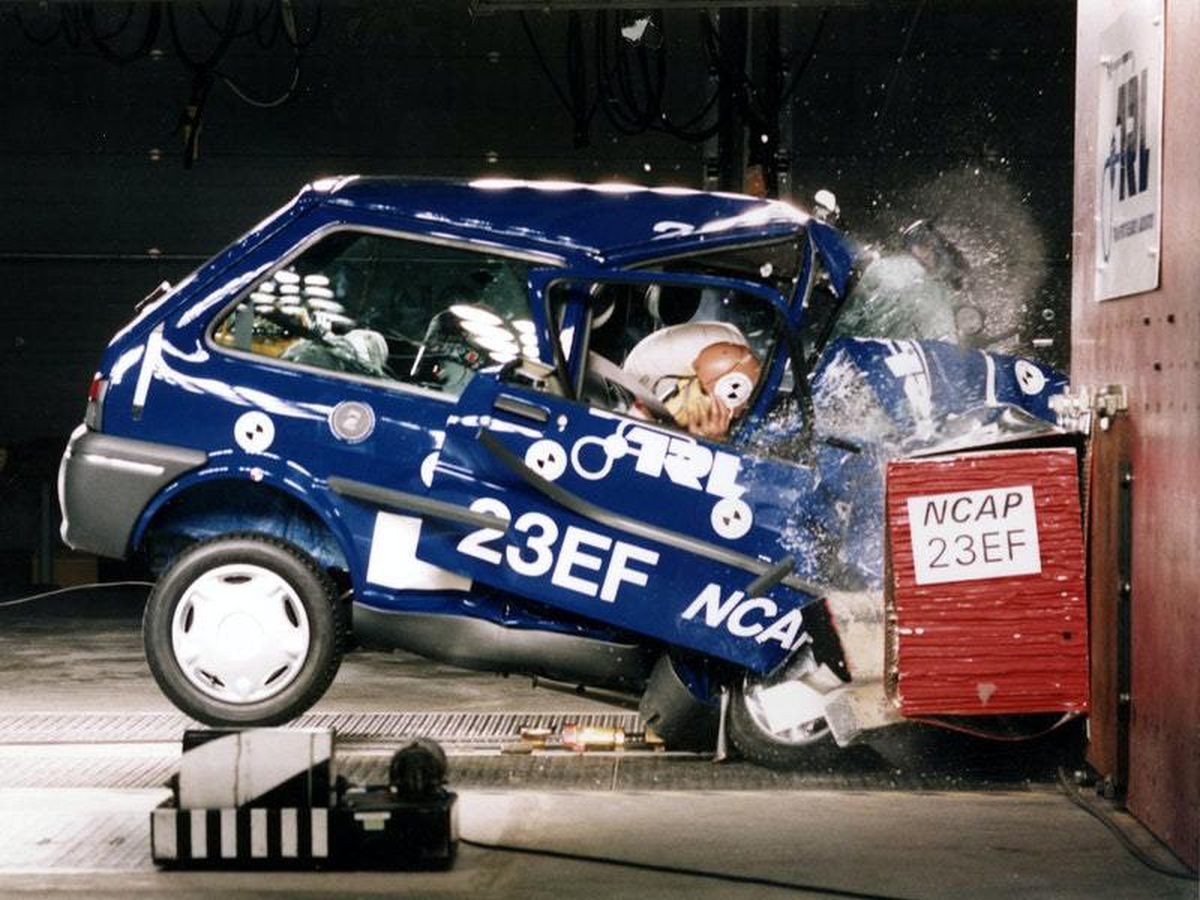
The need for crash tests first appeared as early as the first recorded automobile accident, in 1986. However, a full push toward crash tests did not start until well into the 1900s. First, manufacturers lacked any data on how the human body responds to the violent forces that occur during a vehicular crash. So, they needed to invent the methods to gather this data.
Around the 1930s, these companies relied on cadavers to test deadly conditions. However, not only did these cadavers pose moral issues, but these deceased bodies mostly represented only older adult bodies. Moreover, testers could only use cadavers once for testing before they became inviable. To say the least, other types of tests in this era, like volunteer and animal testing also came with their set of issues.
By the 1950s, the first version of a test dummy, “Sierra Sam” popped up. This dummy utilized the data gathered from earlier tests to simulate the human body. From this first model, several new hybrids developed in the decades to come. Thus, by 1976, testers could represent an entire family with these human analog dummies. However, the public still did not take notice of these crash test dummies quite yet.
The National Highway Traffic Safety Administration’s Seat Belt PSAs
https://www.youtube.com/embed/ANAlT4pjRDI?feature=oembed
Public Safety Announcements did not appear in the 1980s, however, they did gain traction during this decade. Many groups, including parts of the United States government, employed PSAs to push for public awareness on key issues, like drugs. Moreover, to appease “educational” criteria required for children’s programming, many 1980s cartoons also included short PSA announcements to help teach children about subjects like bullying.
Thus, in 1985, to help promote the push for seat belt usage, along with states passing laws that required seat belts, the National Highway Traffic Administration launched a televised PSA campaign. These PSAs featured two crash test dummies, Vince and Larry. While Jack Burns, who is best known for his comedy pairs with George Carlin and Avery Schreiber, supplied the voice for Vince, Lorenzo Music, who memorably voiced Garfield, provided the voice for Larry.
These crash test dummies may have portrayed slapstick antics to bring attention to the need to wear seatbelts. However, the message that “you can learn a lot from a dummy” caught people’s interest. So, this PSA campaign lasted for well over a decade, where it retired from air in 1999.
Tyco Toys’ The Incredible Crash Dummies
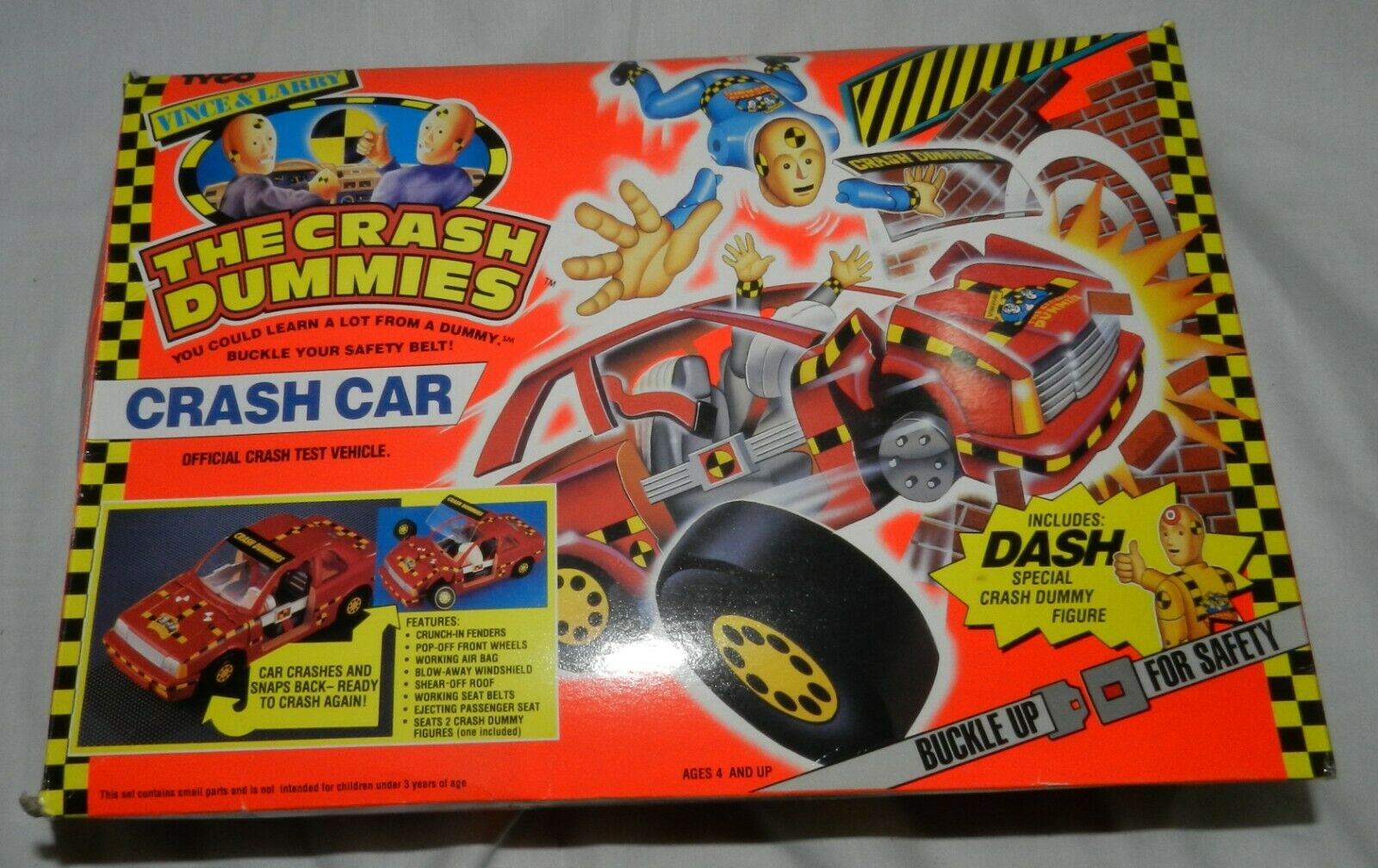
By the 1990s, the popularity of Vince and Larry gathered the interest of toy companies, like Tyco. Not only did they notice the likability of the starring duo of dummies, but they realized that children enjoyed the antics that occurred when the crash test dummies crashed into walls. Thus, they set out to create action figures that mimicked the mayhem present in the PSAs.
Early on, around the spring of 1991, the toy line went by the name Vince and Larry: The Crash Dummies. Unfortunately, the NHTSA decided to pull out their support of the toy line after Tyco released only the first wave of figures to the public. Thus, Tyco quickly changed the name to The Incredible Crash Dummies. They also renamed their starring duo dummies to Slick and Spin.
Not only did the line feature Slick and Spin, but an entire family, including pets, formed out of this line. Moreover, there were several playsets where children could crash various vehicles, including taxis and motorcycles, against walls.
Controversy leading to the downfall
https://www.youtube.com/embed/cxm-V-_npFw?feature=oembed
By 1993, the public view that Tyco’s Incredible Crash Dummies toy line glorified car crashes began to take president. The first sign of this mounting controversy popped up in 1991 when the NHTSA withdrew its support. Thus, a fear that the message would be lost to the children was visible even as the toy line began.
By 1992, articles began to run that highlighted the controversial nature of the toy line. While the toy line was among the top 10 toys of the season, parents still feared that it glorified violence and car crashes. Despite these fears, publications that reached out to public safety officials could not find any inquiries about these toys
Moreover, these toys contained parts that purposely fell apart, along with parts that accidentally fell apart. There were small metal clips inside of the crash dummy figures that unfortunately could fall apart as children played with them. So, even though the packaging openly warned that children under the age of three should not play with these toys, parents still feared that these toys could harm their children.
No matter the exact source, Tyco concluded their production of the Incredible Crash Dummies by 1993. Though, in 1994, they released an offshoot of the toy line, Crash Dummies racing. So, perhaps, the popularity of the toy line outlived the controversy.
Crash Dummies live on through Hot Wheels
In 1998, Mattel bought up Tyco and absorbed it into their company. After the purchase, the Incredible Crash Dummies became a part of the Hot Wheels brand with a completely different cast. This time, the cast included dummies like Crash, Crunch, Splice, and Gyro. Once again, these dummies featured parts that could fall apart after a collision.
Like Tyco’s prior line, Hot Wheel’s Incredible Crash Dummies also featured vehicles, most notably race cars, that the toys could sit in. Thus, children once again could simulate car crashes with these toys, keeping the legacy alive. The Hot Wheel’s Incredible Crash Dummies toy line ran from around 2003-2004.
Incredible Crash Dummies on TV
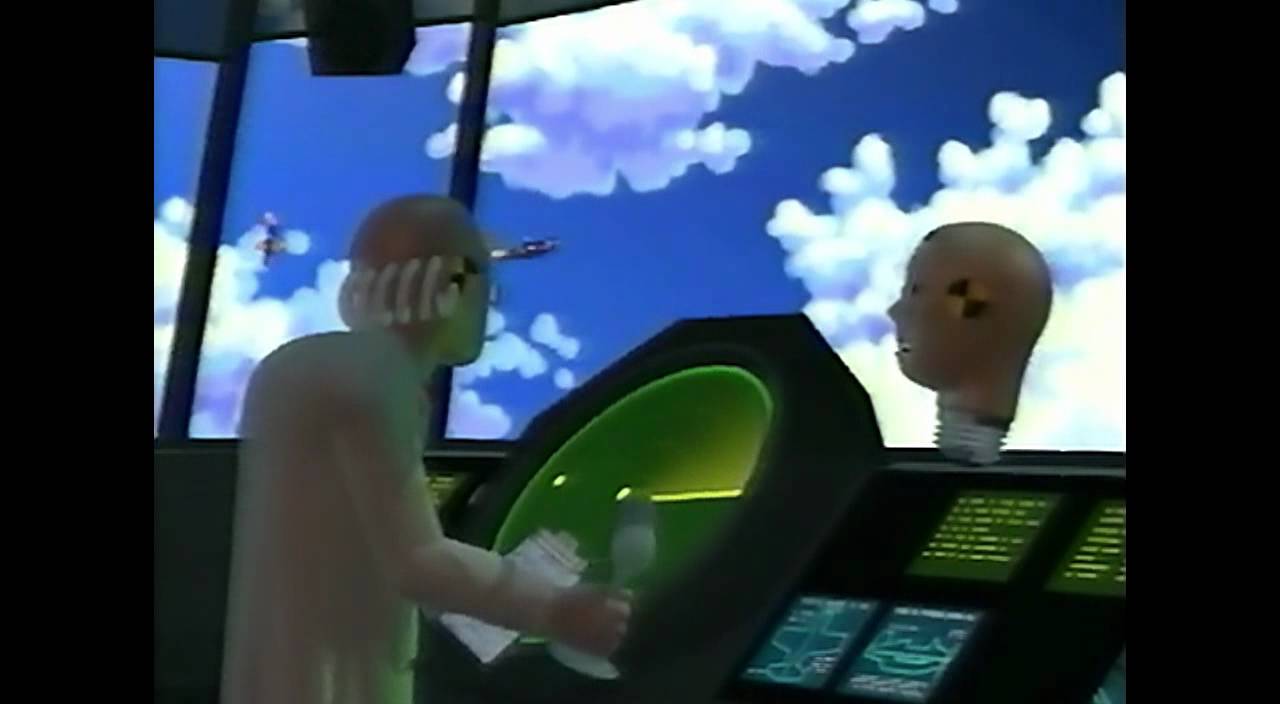
As with many pop-culture franchises, properties tend to circle and return to their original media. In the case of the Crash Dummies, who originally gained traction as a televised PSA, Tyco’s toy line produced a half-hour television show. In 1993, this computer-animated special that starred Tyco’s crash dummies, Slick and Spin, aired on Fox Kids. This special introduced children to the world of Dummyland, where only crash dummies existed. As in the real world, these crash dummies also made a living, though we do not pay actual test dummies, testing car safety.
The plot centered around another crash dummy, Ted, whose head detached from his body while testing an “uncrashable” prototype armor, Torso 9000. After an evil Junkman’s head became attached to Ted’s body, it began creating an army from spare car parts. The Junkman also nabbed the creator of the Torso 9000, Dr. Zub, in hopes of mass-producing the armor. Thus, Slip and Spin had to come in and save the day as well as the doctor.
While this special did not lead to a full series, Tyco sold the VHS with a special Ted and Junkman action figure. So, it functioned as a promotional item for the Tyco toy line.
Meanwhile, Hot Wheels also brought their Incredible Crash dummies to the television screen in 2004. Once again, Fox network aired the Crash Dummy animated shorts, with 4Kids Entertainment producing them. As with the toy line, these shorts featured the new cast. This series of shorts ended by the fall of 2005.
Incredible Crash Dummies in Video Games
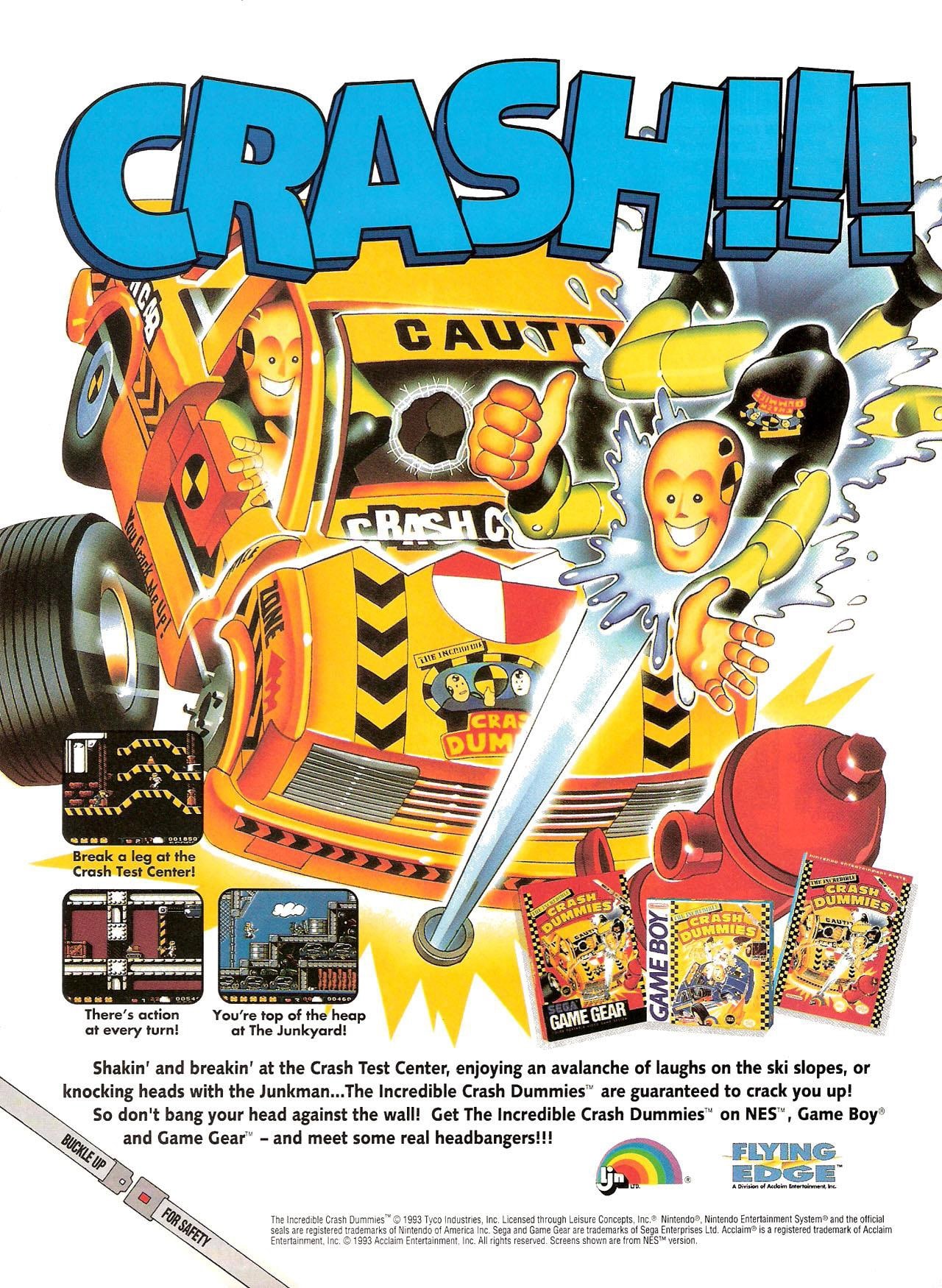
LJN, Ltd became well known for their quickly produced video games that starred licensed franchises, like The Incredible Crash Dummies. So, while no one should have been surprised that LJN jumped on another quick license in 1993, Electronic Gaming Monthly still proclaimed it the Strangest License of 1992. LJN released this title to several different systems, including the NES, SNES, Genesis, and even the Amiga.
The 16-bit games, for the Genesis and SNES, had players take control of the main character, Slick. The game portrayed a loose interpretation of the aforementioned animated special in a side-scrolling adventure. Notably, when Slick received damage, he lost a limb, which players recovered by collecting screwdrivers. Aside from losing a life once Slick lost all his limbs, the mechanic did not affect gameplay. However, the worst part was the fact that LJN stretched out the game for sixteen levels, creating a dredge to play through.
Meanwhile, the versions made for the 8-bit systems, like the Game Boy and Game Gear, featured stunts that Slick and Spin had to complete. These games graded the players on the style of their stunts.
Still, like most other LJN video games, these games received terrible reviews. Even during the time, few enjoyed the controls nor the content of these games.
Incredible Crash Dummies in Comic Books
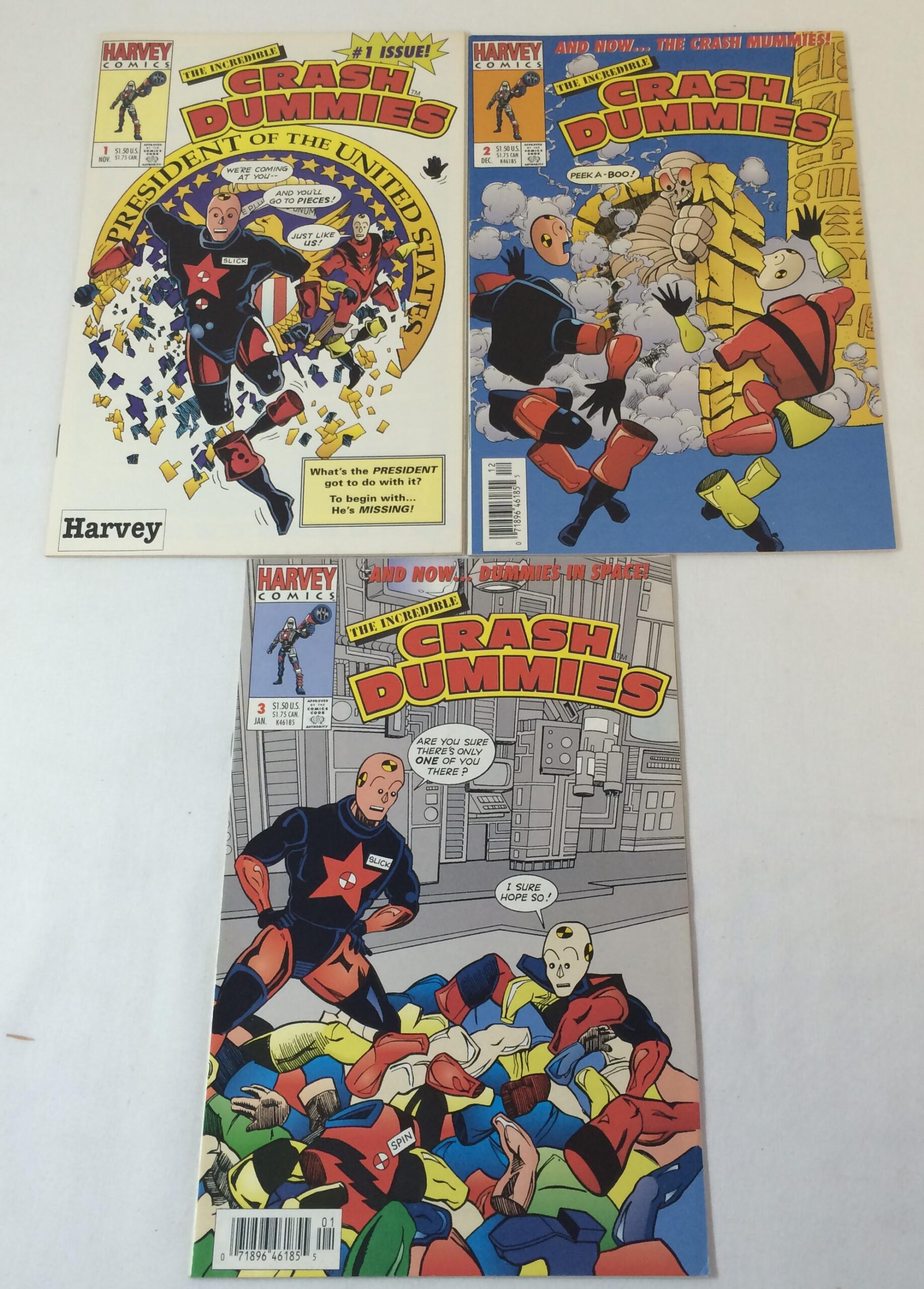
The Incredible Crash Dummies phenomenon did not end with video games. In 1993, Harvey Comics created three comic books for the franchise. These comics presented the stories of the struggle between the Incredible Crash Dummies and the Junkmen. For instance, in issue one, a Junkman tried to run for president.
Legacy of The Incredible Crash Dummies
While the toy line lasted only a few short years, children who grew up in the 90s enjoyed the mayhem provided by Tyco’s toys. The toy line had a certain charm that quickly attracted children to the mayhem provided by these dummies. The ability to safely crash toy cars without serious harm was also a definite appeal. Fans of the toy line fondly remember both Tyco’s and Hot Wheel’s offerings.
Do you have old and used The Incredible Crash Dummies toys?
If you have a collection of old and used toys, you can turn those toys into cash. There is no reason to let those old toys collect dust. Contact us today to sell your The Incredible Crash Dummies toy collection.
About the Author
Chris Ingledue is the founder and owner of Wheeljack’s Lab pop Culture and Toy Shop. His vision has always been to reunite customers with their favorite childhood toys and pop culture, triggering fond memories, and reigniting their imaginations. Every day he works in the “lab” where it’s Christmas 365 days a year; scouring the internet – like we did the Sears Catalog of yesteryear – for the next great treasure, awaiting the arrival of the postman as if he was Santa Claus himself and helping collectors worldwide with their own versions of Christmas. For Chris, every day as a vintage toy buyer is an absolute joy!